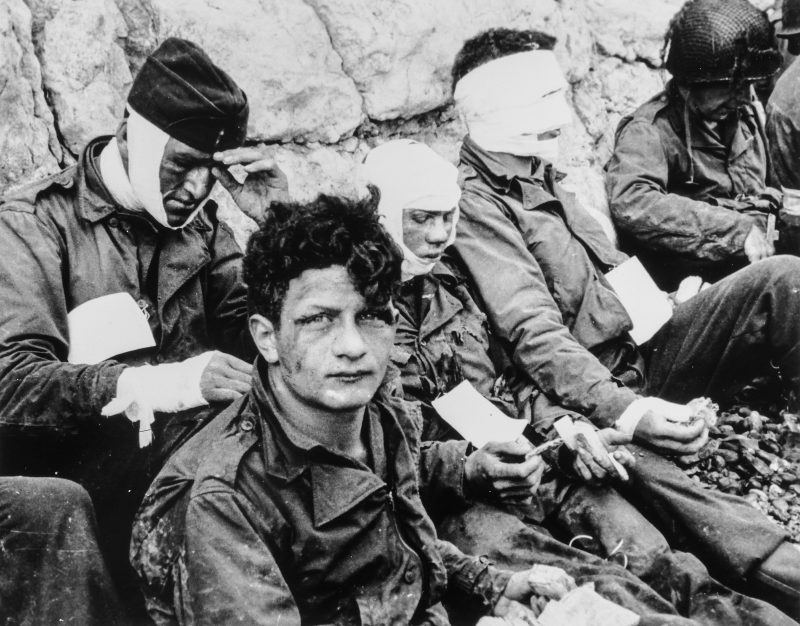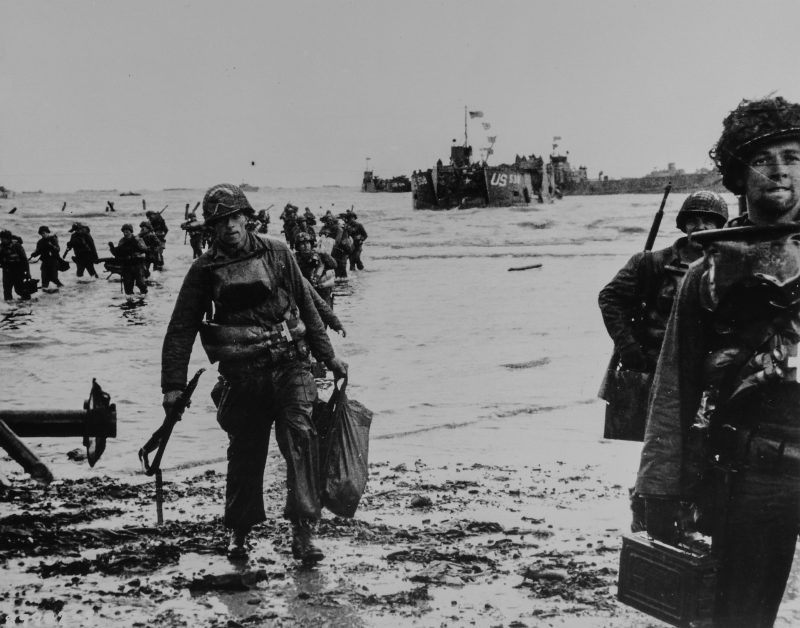(NEXSTAR) – The American soldiers who landed on the beaches of Normandy demonstrated incredible bravery amid some of the most intense fighting of the D-Day operations, often while faced with scenarios that some men could only describe as “hell” on earth.
“I feel lucky every day of my life,” WWII veteran Vernon Lingle once said in an interview with the U.S. Department of Defense, after describing the “hell” he witnessed on June 6. 1944. “And I praise God every day that I’m able to stand here in front of you all.”
But for every surviving veteran of the D-Day invasion, there are thousands who are no longer with us — having either died during the war or in the 80 years since. Some never got the chance to share their stories with family, and others may have chosen not to speak about their experiences before they passed.

For their loved ones, it remains important to recognize these heroic WWII veterans for their sacrifices. And, for those interested in learning more about a family member’s specific experiences during the war, there are resources to help identify when and where a veteran may have served.
Before diving in, however, it’s best to seek out those closest to the veteran, experts say.
“Start by speaking to family and ask questions, maybe a parent, grandparent, aunt or uncle,” says Jennifer Utley, the director of research at Ancestry.com. “It’s amazing what you can pick up from a simple conversation.”
Using whatever new knowledge available, family members of WWII veterans can then try to track their ancestors’ military history with online resources. The National D-Day Memorial, based in Bedford, Virginia, boasts “the world’s most complete account” of servicemen who died on June 6, 1944. The American Battle Monuments Commission, which oversees the operation and upkeep of cemeteries in foreign countries, also allows users to search for troops who have been buried or memorialized in its cemeteries, along with information about their dates of death, the decorations they were awarded, and which divisions they belonged to.
Ancestry.com, as Utley tells Nexstar, might also offer some insight into relatives who may have served on D-Day, whether they died during the operation, went on to continue fighting, or ultimately made it home. Users can use Ancestry’s search tools to look up military records (the Army and Navy, specifically) as well as WWII hospital admission records. There are also tools for finding draft registration cards in the Ancestry database, which could provide clues as to when a family member may have been called to service.
Ancestry, too, owns Fold3, an online database specializing specifically in military records — including documents, journals and photos — from America’s armed conflicts.
In some cases, the National Archives can send military records to veterans, their next-of-kin, or other family members upon request. Users must submit certain pieces of information to help obtain the records, like service numbers and dates of birth.

It’s important to note, though, that some records for U.S. veterans — specifically those whose service ended between 1912 and 1960 — were lost in a fire at the National Personnel Records Center (NPRC) in St. Louis in 1973. The U.S. Department of Veterans Affairs can help to get those records reconstructed for vets seeking disability compensation, but there are limitations to what they can find.
“The fire destroyed 80% of the records held for Veterans discharged from the Army during this time period,” the VA estimates.
Even still, the promise of learning about a loved one’s heroic military service far outweighs the effort and time needed to seek the information. It’s why countless relatives, historians and museum operators — like Stephen J. Watson, the president and CEO of the National World War II Museum — strive to keep their stories alive for future generations.
“We have the enormous responsibility to ensure that the memories and experiences of the war will not be lost as those who lived through it leave this world,” Watson once said.


























































